No sea trout box should be without a small Gammerus imitation, and the Copper Bully is one of the most efficient and easily tied ones. Consisting of very few materials in this version, it hardly gets any easier. It can also be a scud or a cress bug in a tight spot.
Kobberbassen - or The Copper Bully - has been mentioned on the Global FlyFisher many times, and it might seem overkill to cover this simple fly again, but trust me: it's worth it! No sea trout box should be without a small Gammerus imitation, and the Copper Bully is one of the most efficient and easily tied gammerids.
The fly is also sometimes referred to as the Copper Louse - Kobberlusen - and its origins seem to be a merge of two strains. Kobberbassen (English: The Copper Bully) was conceived by Frank Jensen in 1996 while Kobberlusen (English: The Copper Louse), which originally was a bit more complex, was initially tied by Morten Kristiansen. There are numerous interpretations of these flies out there, and a quick search shows that not two are alike in the detail, but the flies are still so identical and so simple, that pooling them into one is obvious.
Their prime common trait is the copper dubbed body.
The Gammerus is a very large group of small bugs, which are widespread and common in both saltwater and freshwater. The bugs vary in size, but a ½ centimeter or 1/5 of an inch must be considered a giant Gammarus, so the flies you tie to imitate them are fairly small - typically in th #8 to #12 or #14 range. We tend to tie our imitations slightly larger than the natural, and the same is the case with the Copper Bully as a Gammarus imitation.
A fly in the hook size 8-12 range - not to mention 14 - is considered very small for sea trout, and one way of compensating for the small hook is to use a short shank wide gape hook. One of the best types of hooks with these traits is a specimen or carp hook like the Kamasan B980. This hook is strong, wide and very sharp. The only drawback is that it's offset, meaning that the hook point is not parallel to the shank when seen from above. This fact shouldn't keep you from using it.
Simply bend the hook back to straight if you want.
You can also use the offset hook. It might work better than the straight version.
The carp folks seem to think so.
The Copper-whatever flies have been tied with all kinds of extras - tail, shell, legs, ribbing and whatnot - but essentially all you need is copper dubbing of some kind, This comes in many variations from something that resembles shiny orange hair to something which is much coarser and copper-like such as Angel Hair or Lite Brite. What you use depends partially on taste and partially on what size hook you a re using.
The variation we show here is tied by Ken Bonde Larsen and has a small tail and a rib for reinforcement, but you can omit both if you please. Missing the ribbing might cost a shredded fly or two, but it will increase your fly tying productivity by a factor of two or three!
The Copper-whatever flies are typically used in clear, shallow water. Since they imitate gammarids or scuds, the presence of these small crustaceans is often the trigger, which gets this pattern out of the box. It has caught many different species, and apart from being a great sea trout fly, it's also excellent for garfish when tied on small and very sharp hooks.
Tied in small sizes it will no doubt make a fine freshwater fly too, imitating brownish nymphs, scuds and cress bugs.
|
|
|
|
|
|
|
|
|
|
|
|
|
|
|
|
|
|
|
|
|
|
|
|
|
|
- Log in to post comments









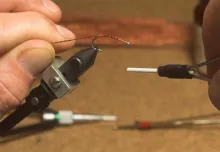
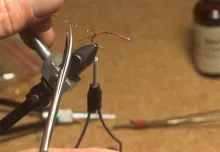

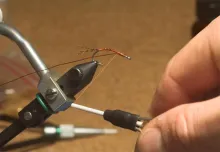
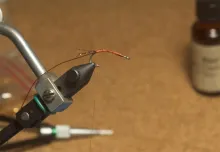
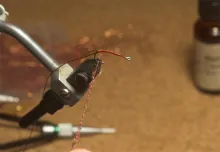
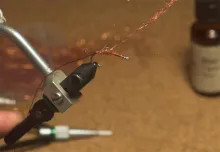
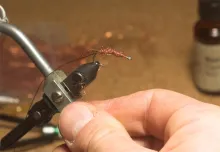
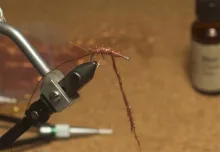
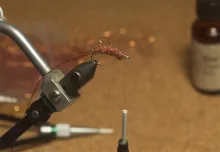

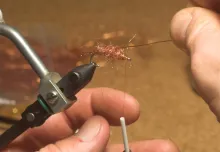
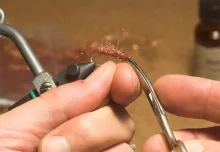

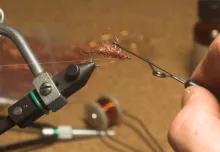
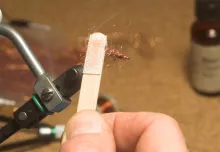
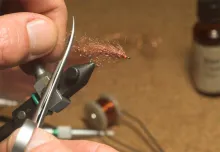
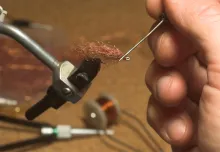

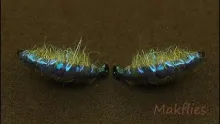
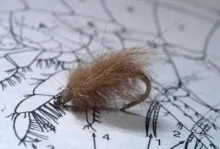

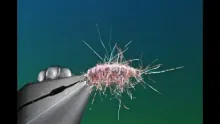
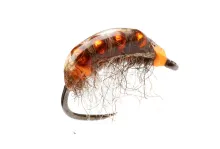


THIS LOOKS LIKE AN E
THIS LOOKS LIKE AN EXCELLENT PATTERN FOR ME TO TIE AND THEN CATCH SOME SEA TROUT IN CHARLOTTE HARBOR ON